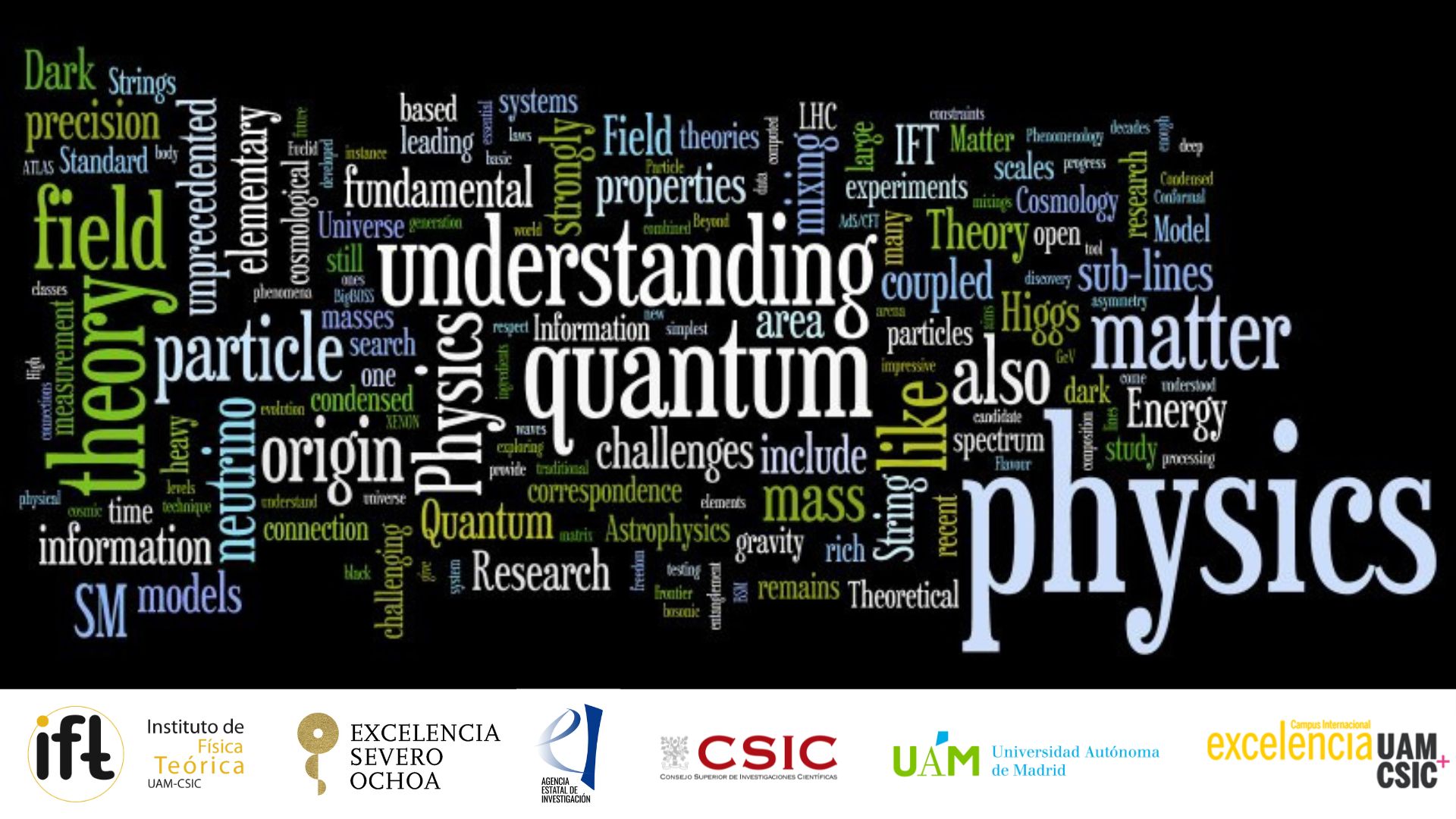Centro de Excelencia Severo Ochoa
Menu
Search

IFT Seminar Room/Red Room
Supersymmetry (SUSY) has been considered since long ago the leading paradigm of beyond the Standard
Model (SM) physics as a framework that tackles the SM hierarchy problem, provides gauge coupling
unification and a well-behaved cold dark matter (DM) candidate. Nevertheless, current experimental
searches for new physics seem to have cornered the minimal versions of these models in unnatural
regions of their parameter space, according to the standard Natural SUSY scenario. With the aim of
formulating a general naturalness criterion for minimal supersymmetric scenarios, we have carefully
re-examined the standard fine-tuning measure, which only deals with the cancellations needed to obtain
the electroweak symmetry breaking (EWSB) scale, introducing several improvements such as the mixing
of the fine-tuning conditions and the dependence on the low and high-energy (HE) scales. Furthermore,
we have outlined a method that allow to straightforwardly derive naturalness bounds on the initial
parameters and mass spectrum of any minimal supersymmetric standard model (MSSM) defined at
any HE scale. We have applied this method to specific scenarios in order to compute a complete set
of naturalness bounds, and also employed it to find the most natural gauge-mediated SUSY breaking
model. Contrary to what was expected, we show that Natural SUSY, in general, does not demand light
stops. On the other hand, we find that the most stringent upper bound from naturalness is that of the
gluino mass, which typically sets the level of fine-tuning, but strongly depends on the HE scale. The
most robust result of Natural SUSY is, by far, that Higgsinos should be rather light. Besides, we have
investigated other potential sources of fine cancellations in the MSSM, that if present, must be combined
with that of the EWSB scale. The most important being the tuning to obtain the experimental Higgs mass
and that required to reproduce the correct DM relic abundance. We have quantified them with p-value
like measures that allow us to combine them with the electroweak (EW) fine-tuning multiplicatively.
Regarding DM, we have considered the lightest neutralino as the DM particle and explored the various
possibilities for its mass, composition and interactions that could give rise to accurate arrangements of
the initial parameters to achieve the observed DM relic density. Finally, to illustrate the utility of the
above stated criteria to estimate the global degree of naturalness, we have applied all of them to a specific
model that features low-mass neutralinos and sleptons at low-energy. We find that these scenarios are
rather unnatural when taking into account the aforementioned sources of tuning, which would have gone
unnoticed, if we have only considered the EW fine-tuning.
Social media